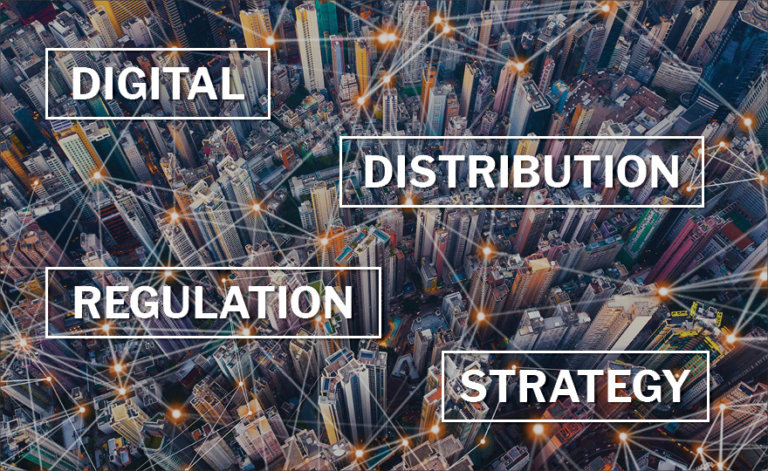Yet, as often happens after a storm, something new began to take shape. Many insurers across the region started testing a hybrid way of doing business blending digital tools with human connection. This wasn’t a simple online shift. It was a deeper change: a reimagining of how people buy, sell, and relate to insurance.
The Changing Face of Distribution
Before 2020, most insurers in Asia leaned heavily on agents. Relationships were built one conversation at a time. When lockdowns arrived, that rhythm was broken but it didn’t end. It evolved.
Now, as life settles into its new normal, it’s clear that the future isn’t about replacing people with technology. It’s about using technology to make people more capable. The hybrid model gives agents the power to combine empathy with efficiency. Customers enjoy smoother service,
agents gain smarter tools, and insurers build relationships that last far beyond the first policy.
1.Build a Seamless Omnichannel Experience
Today’s consumers live in two worlds at once. They scroll through reviews, compare options online, then want to talk to a real person before deciding. Insurers who get this right design customer journeys that feel connected no matter the channel.
A good experience should move naturally from chatbots to agents, from mobile screens to office visits, without forcing customers to start over. No one likes repeating their details twice. With the right data systems and thoughtful design, every interaction becomes part of one continuous story.
2.Create Products That Build Affinity
Customer acquisition has never been cheap, but digital partnerships are rewriting the rulebook. Some insurers are joining forces with ride-hailing and delivery apps to offer micro-insurance small, flexible plans that fit neatly into people’s everyday lives.
Take a driver’s pay-per-trip health policy. It’s more than a product; it’s a signal that the insurer understands the gig worker’s world. These are the small, human touches that build long-term loyalty, the kind you can’t fake with slogans or ads.
3.Focus on Life Moments, Not Sales Targets
In surveys, many Asian customers say they feel agents care more about selling than listening. That’s not a failure, it’s an opening. People think about insurance when life changes: a wedding, a child’s birth, a new house, a new dream.
By giving agents the tools to spot these turning points through apps, reminders, or client dashboards insurers can help them reach out at just the right time. Those conversations feel more like guidance and less like a pitch. That’s how real trust begins.
4.Personalize Financial Advice
Financial planning in Asia is still finding its footing, but demand is rising fast. Customers don’t just want policies; they want understanding. The agent of tomorrow will act more like a financial coach, someone who can explain choices clearly and connect numbers to real-life goals.
Interactive visual tools make this easier. Instead of rattling off statistics, agents can walk clients through their future, step by step. Some companies now use AI-driven advisory tools that help agents hold virtual meetings, draft plans, and close deals remotely. The tech doesn’t replace human insight, it amplifies it.
5.Redefine the Agent’s Role and Rewards
The stereotype of the pushy agent is fading fast. The next generation of professionals will need empathy, digital fluency, and strong financial knowledge. That’s a good thing but it also means companies must rethink how they compensate and motivate their teams.
6.Commissions are insufficient on their own.
The profession becomes more solid and recognized when fixed salary, service-based bonuses, and prizes for enduring connections are included. Rewarding agents for maintaining client satisfaction rather than merely acquiring new business is the aim. Provide Modular Goods That Are Actually Worth It
Consumers today have higher expectations for insurance than just a safety net. They are looking for anything that actively promotes their health. Some insurance companies have started to combine coverage with lifestyle benefits, telemedicine, and wellness initiatives.
Singapore is a prime example, as one insurer introduced a breast cancer plan that covers medical advice, recuperation assistance, and preventive screenings. These ideas transform insurance into a partnership that offers tangible assistance rather than protection you hope to never need.
7.Make Data and Analytics Stronger
The hybrid model’s silent engine is data. The customer’s values are left behind with each click, call, or conversation. Agents can resume digital engagements exactly where they left off by sharing that data across channels.
Even further, analytics can be used to forecast future client needs and recommend tailored solutions. A strong CRM system or behavioral analytics tool can turn unstructured data into meaningful insights, which is where technology and genuinely human service collide.
8.Adopt an Agile Method of Operation
Lastly, transformation must be ongoing. The modern insurance market requires flexibility, whereas the old insurance arrangements were designed for stability. Agile approaches, which use small, quick-thinking teams to test new concepts and learn as they go, help businesses remain adaptable.
Rather than putting off major renovations for months, insurers can The insurers who move early training agents, upgrading systems, and keeping the customer at the center will set the pace for the next decade.
In the end, the goal isn’t to choose between humans and machines. It’s to let technology make insurance more human, faster, friendlier, and far more connected to the real lives it protects.




